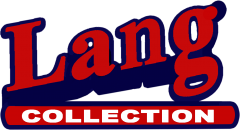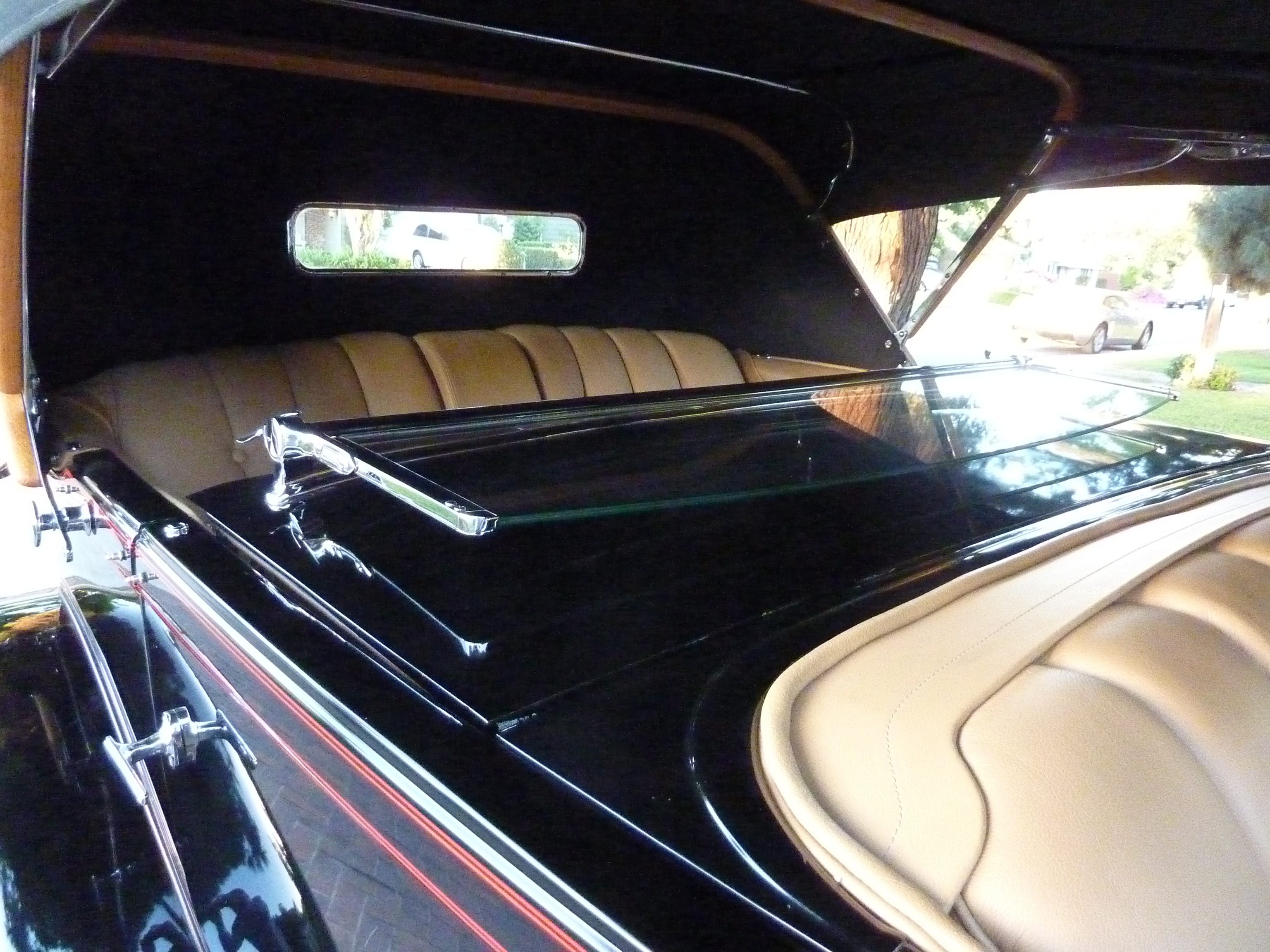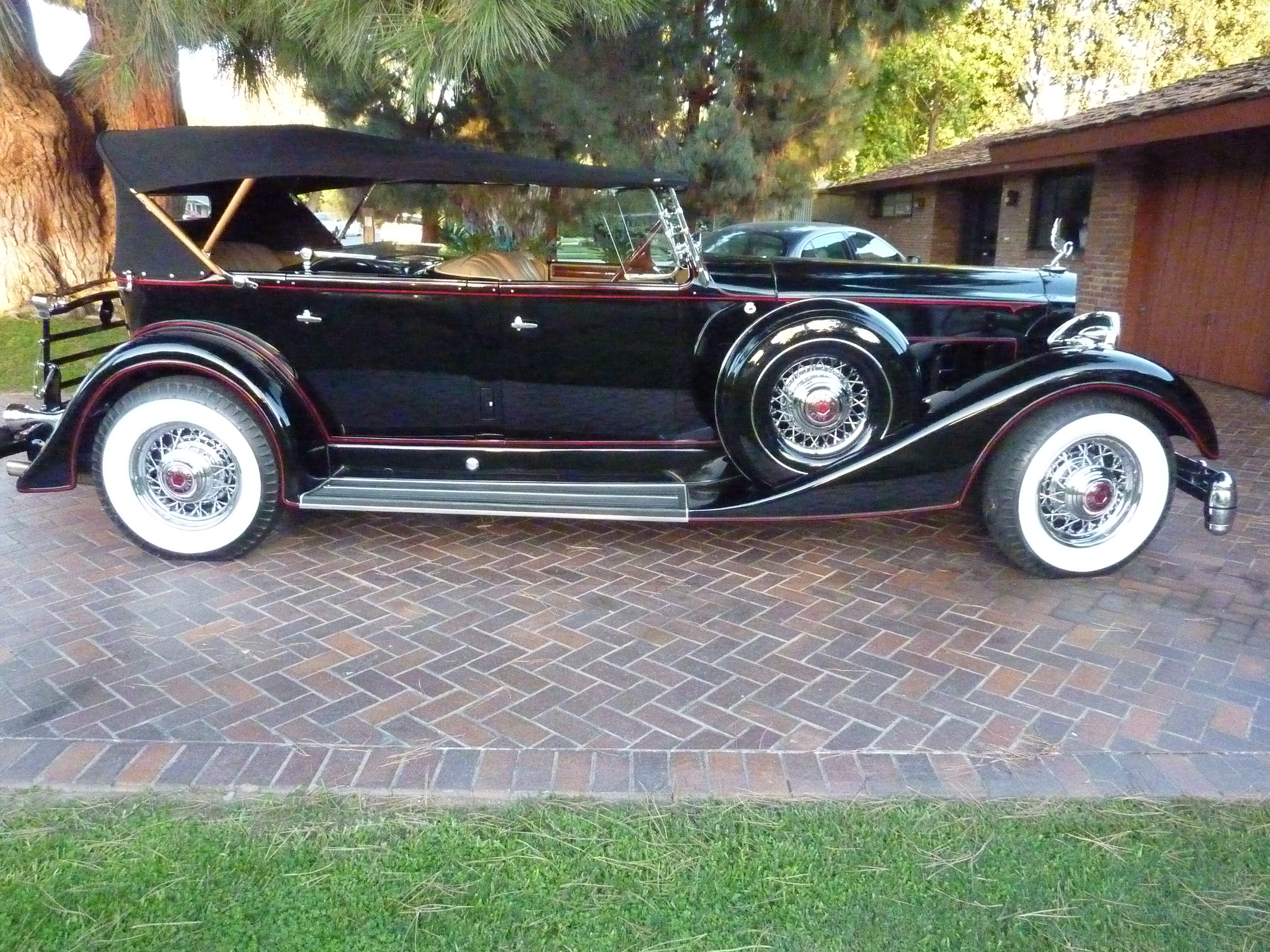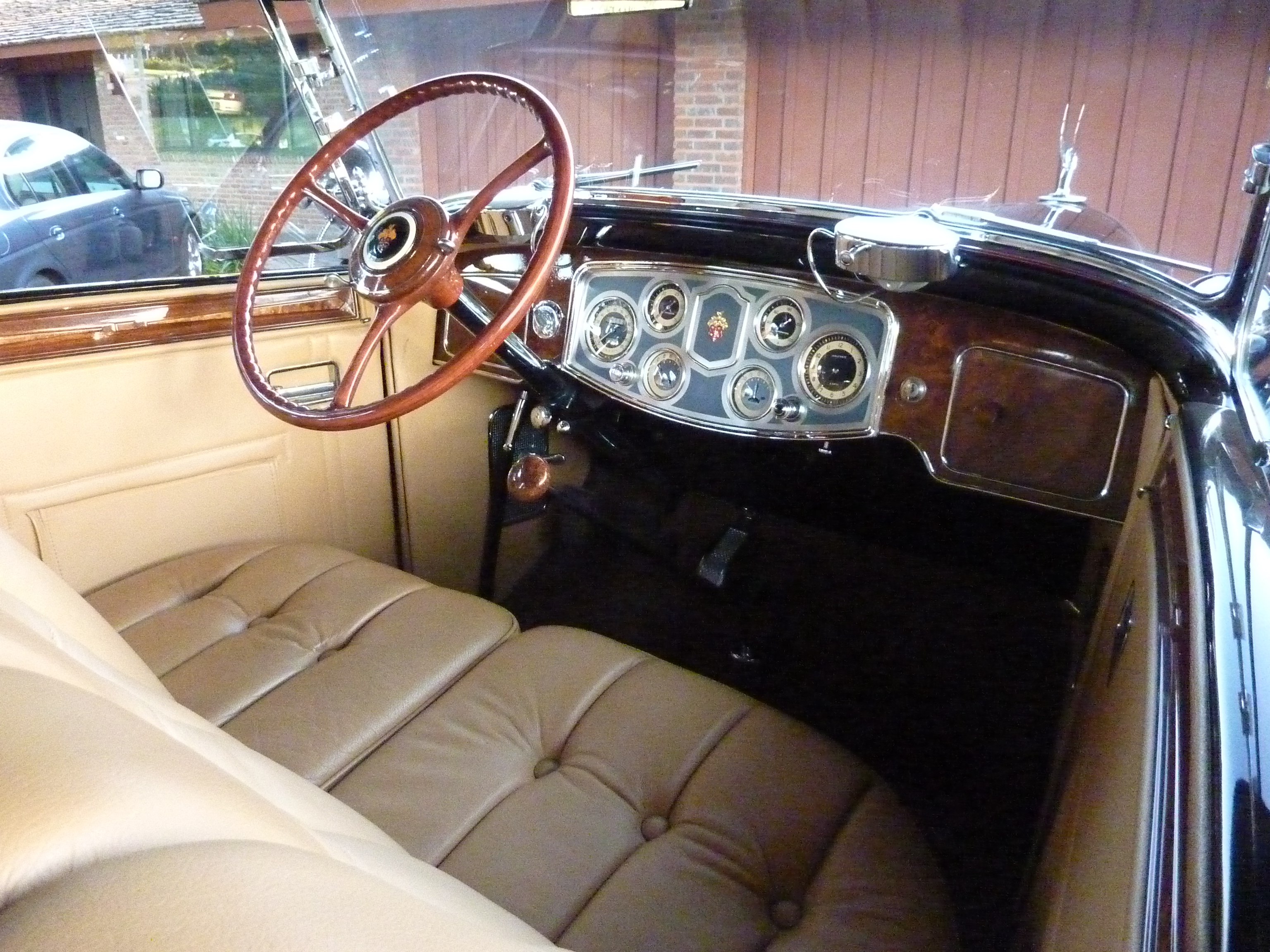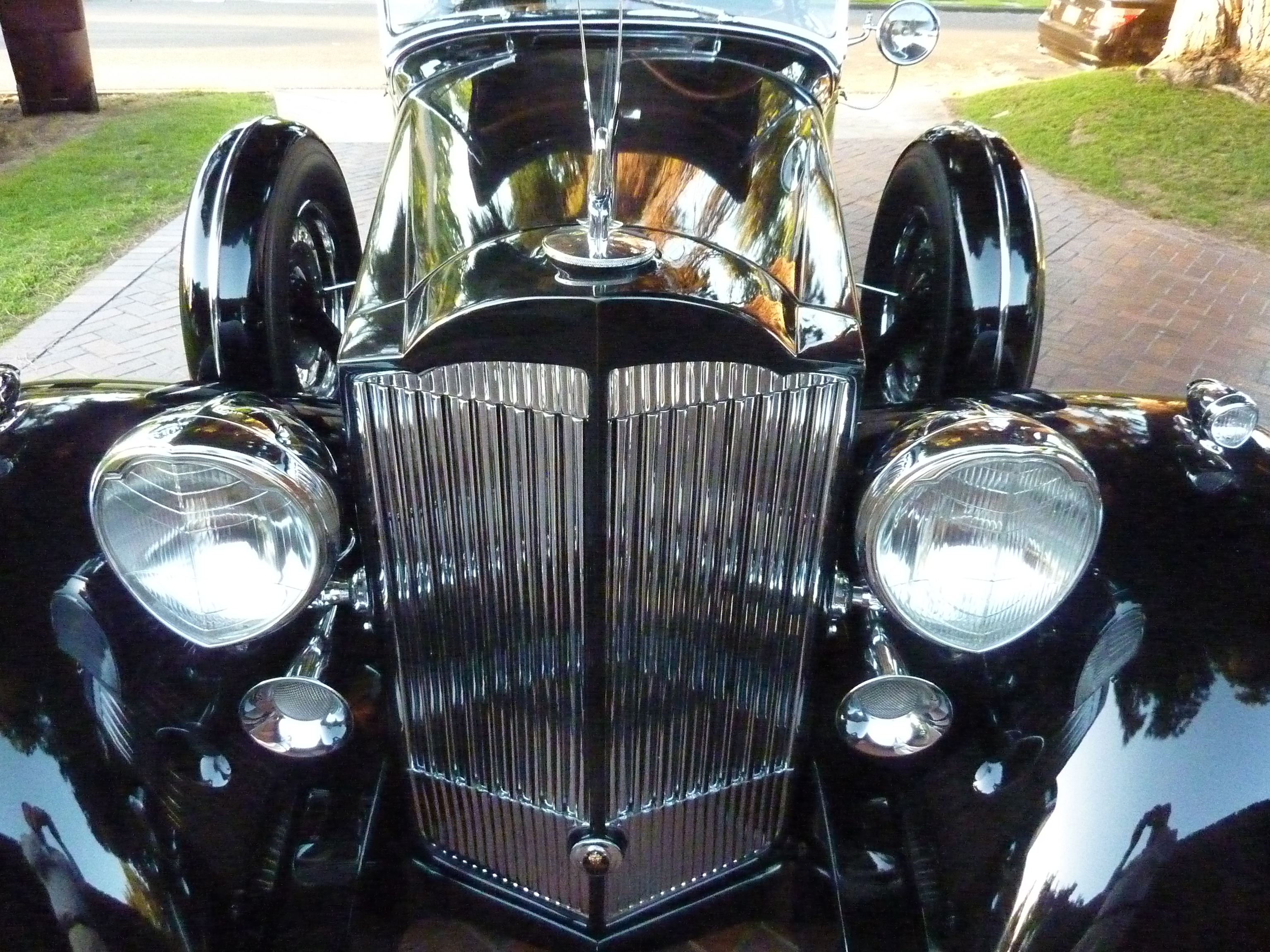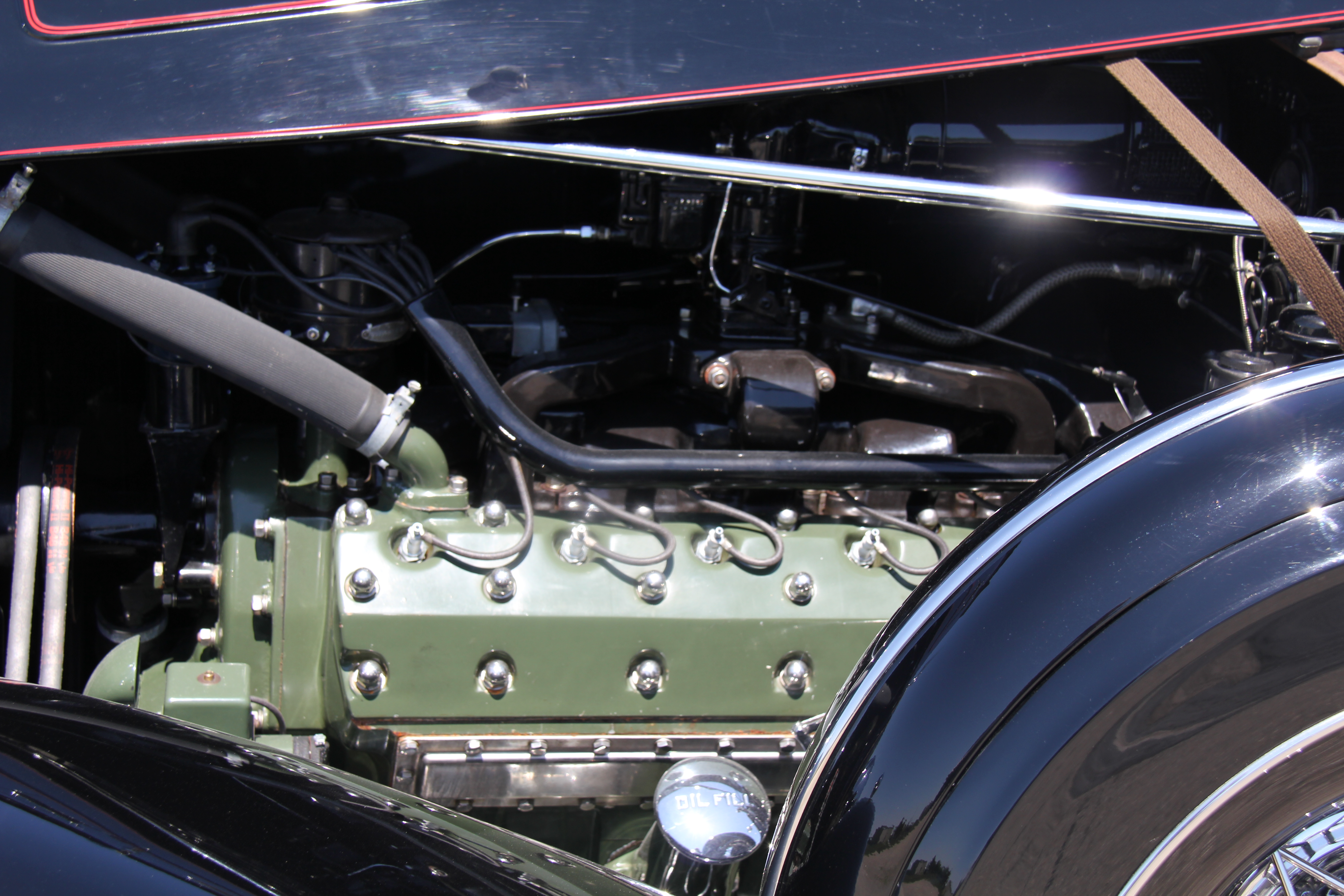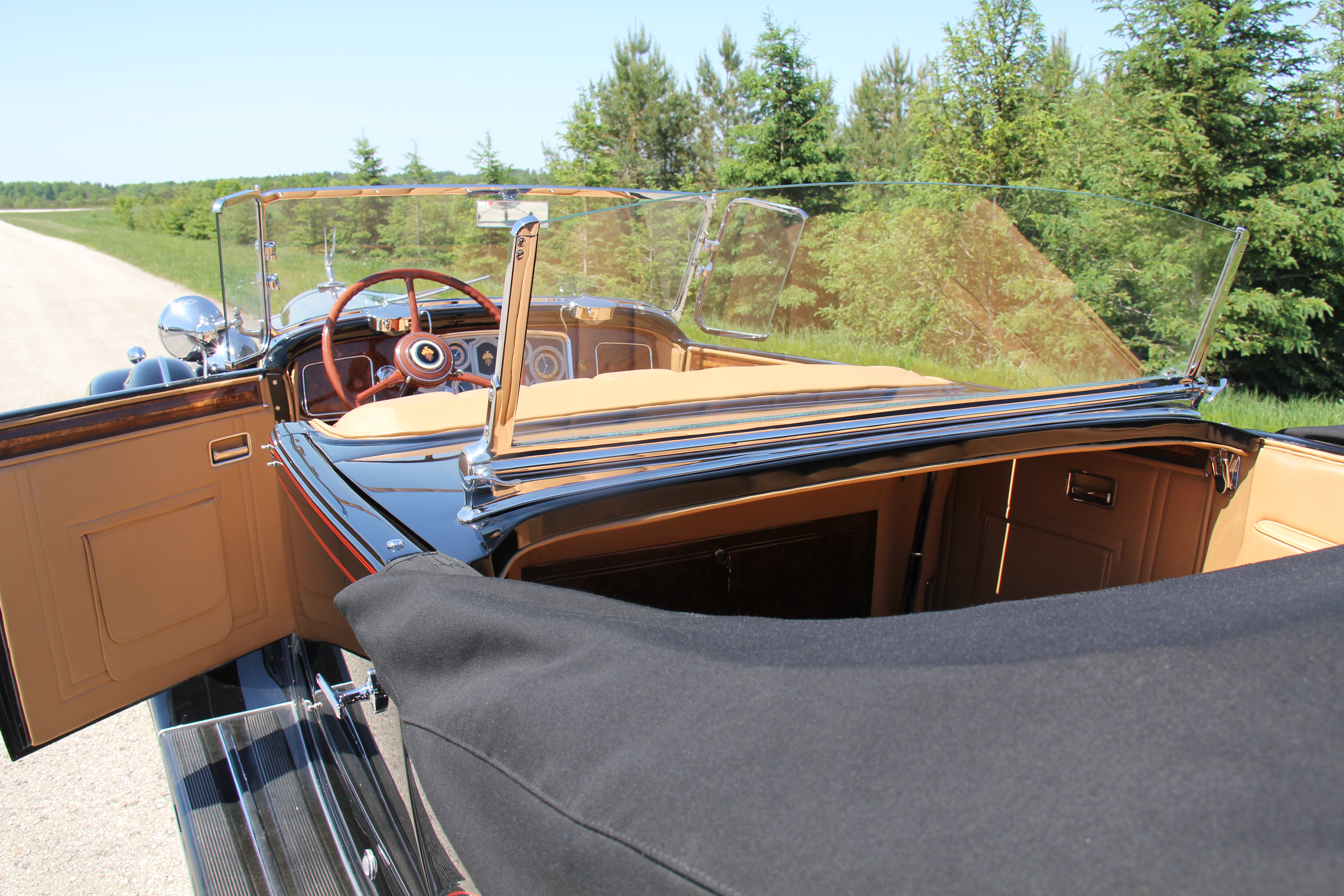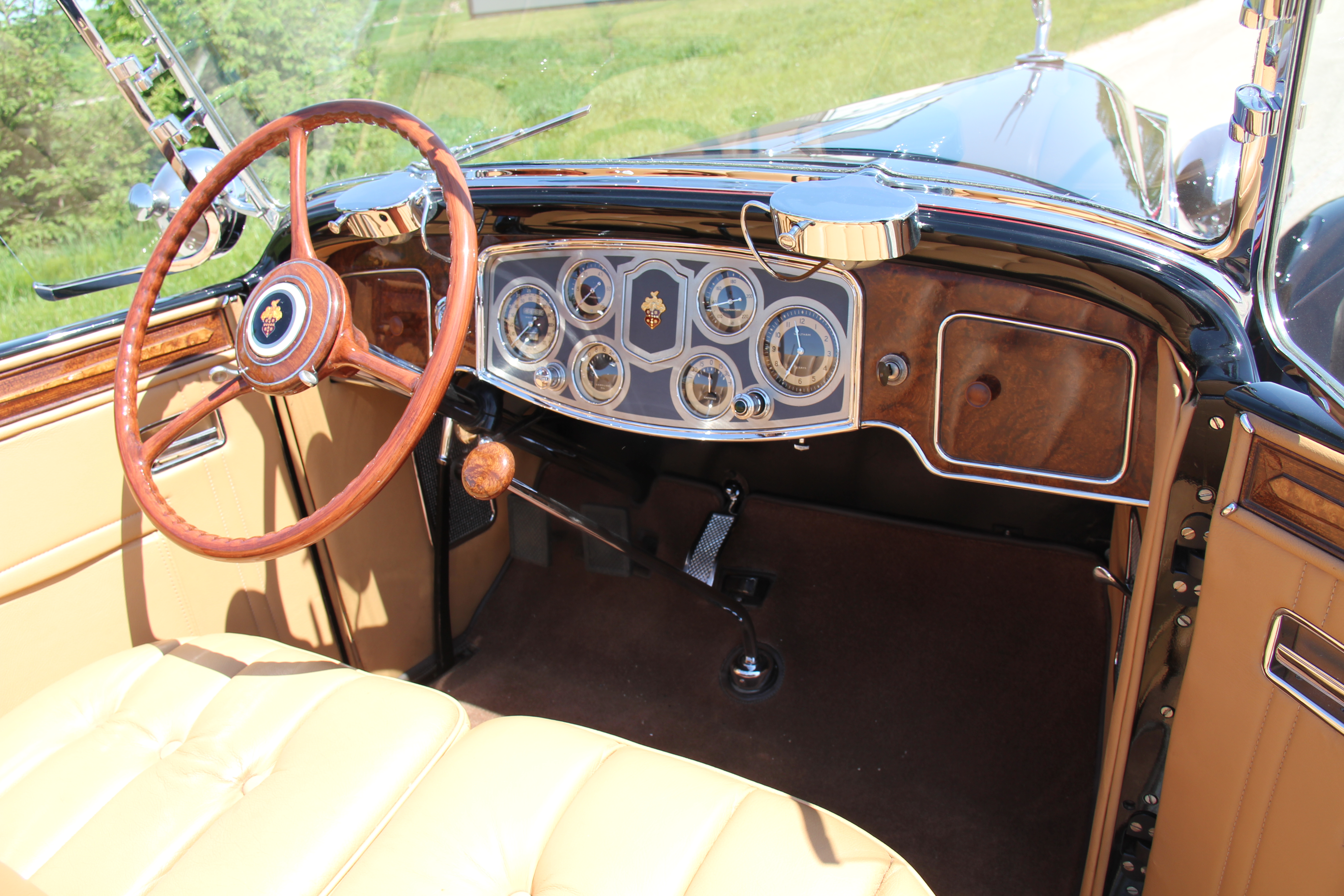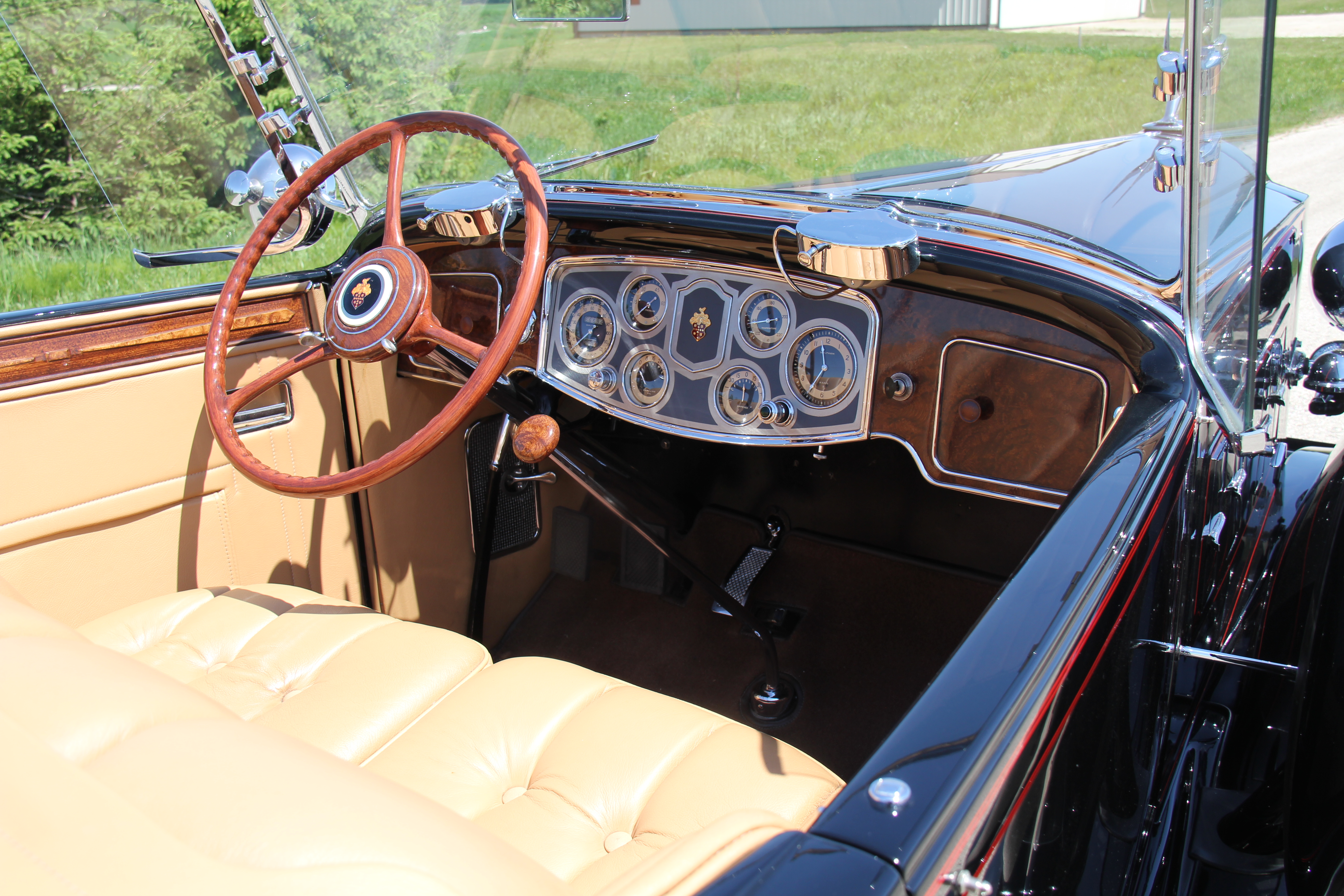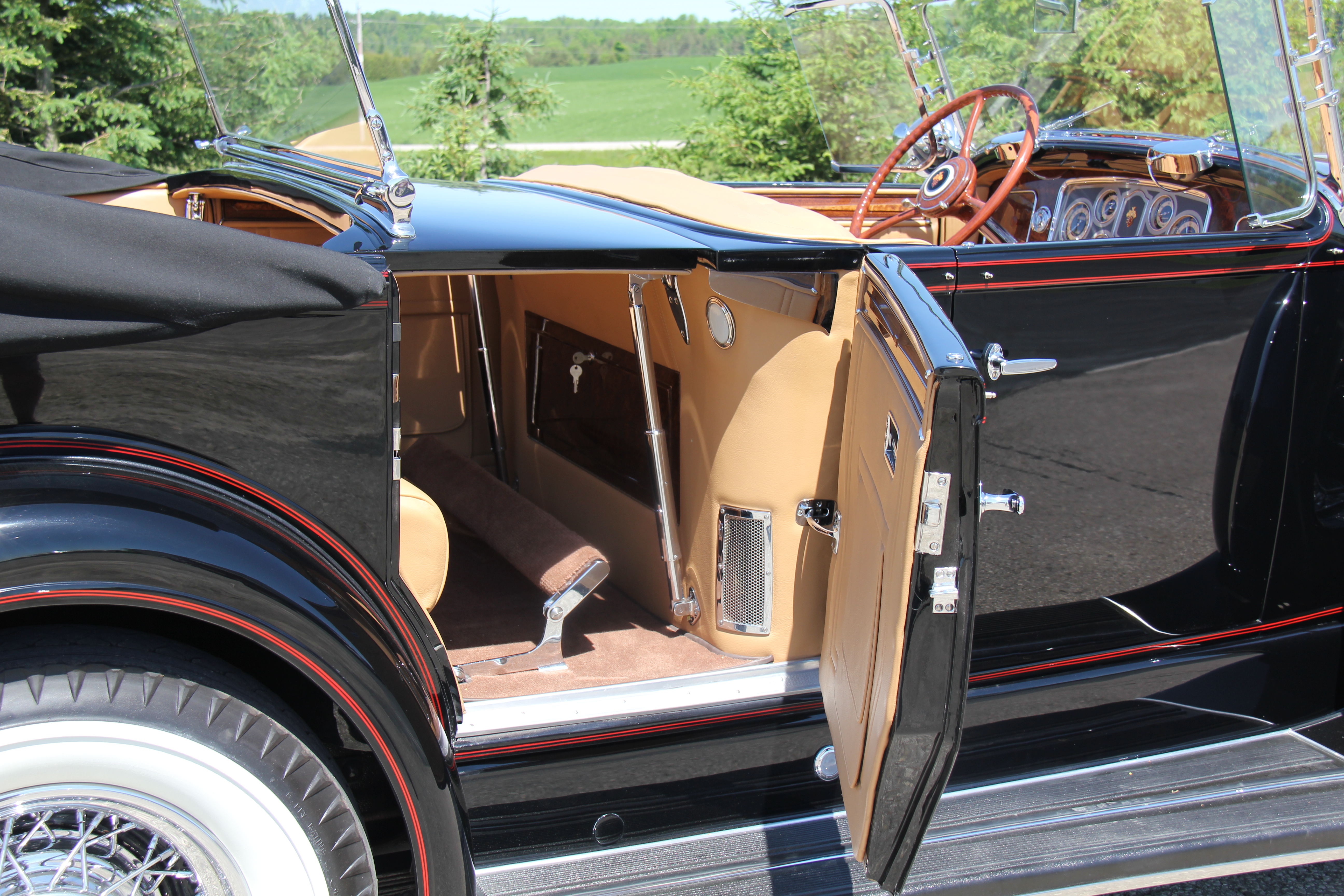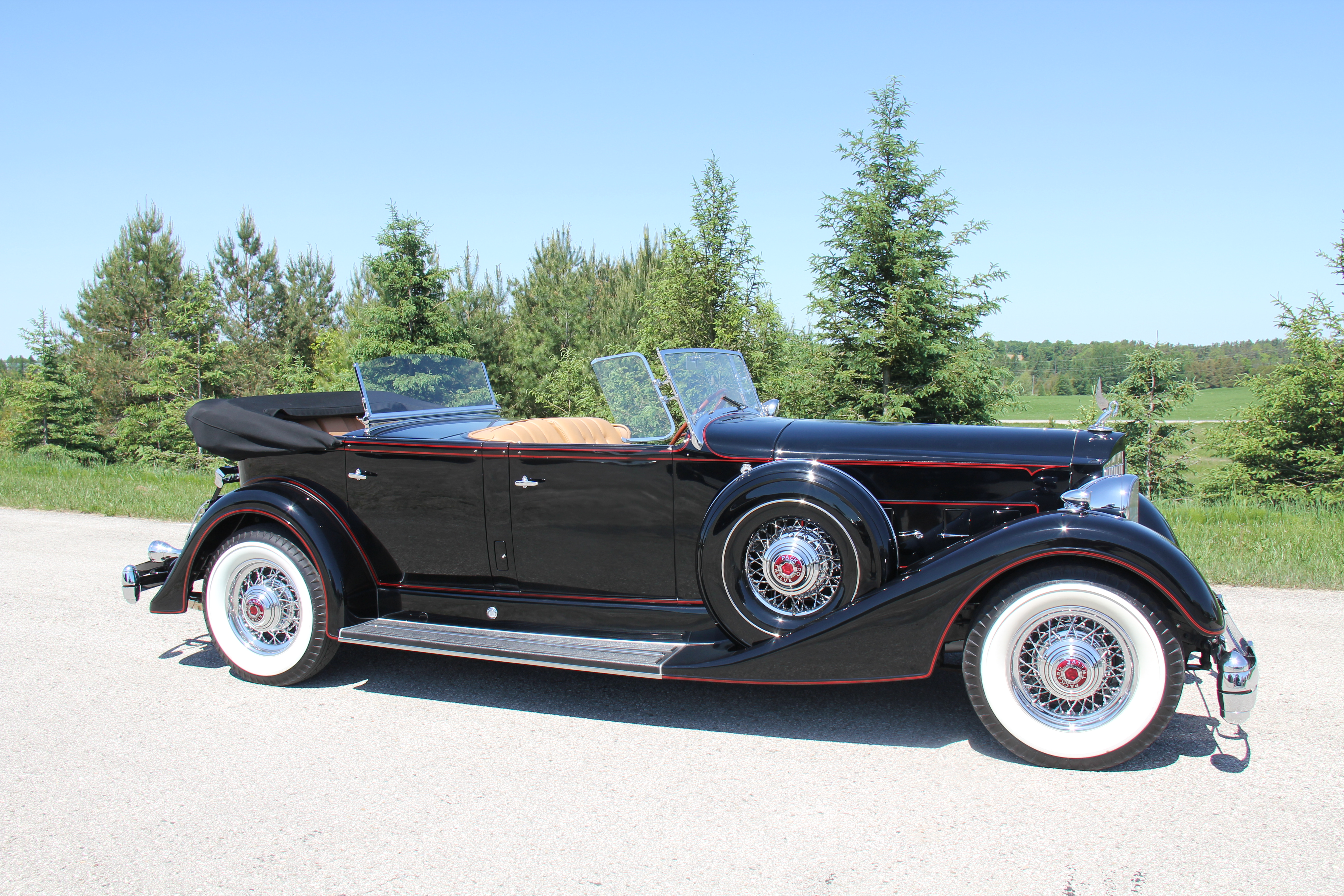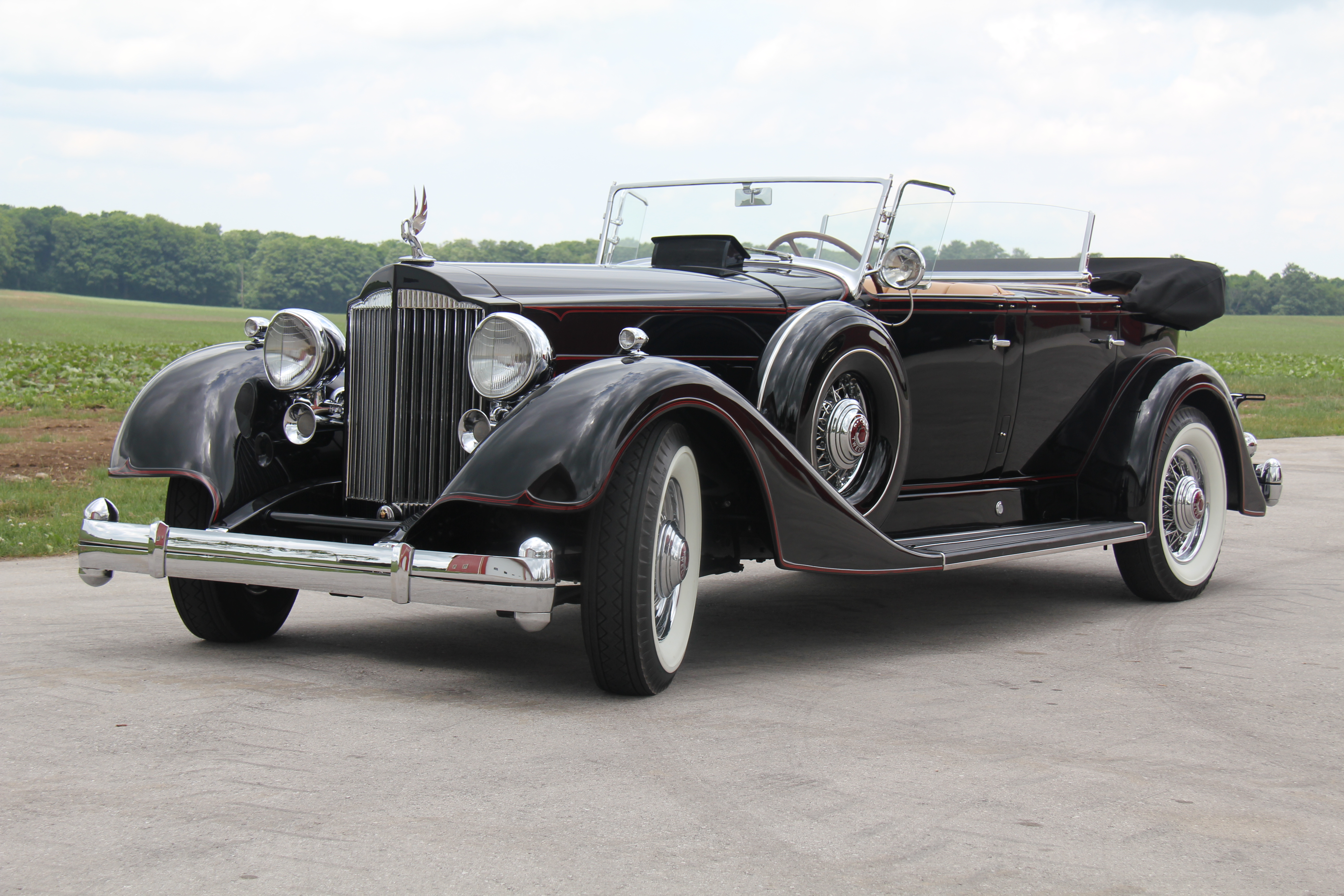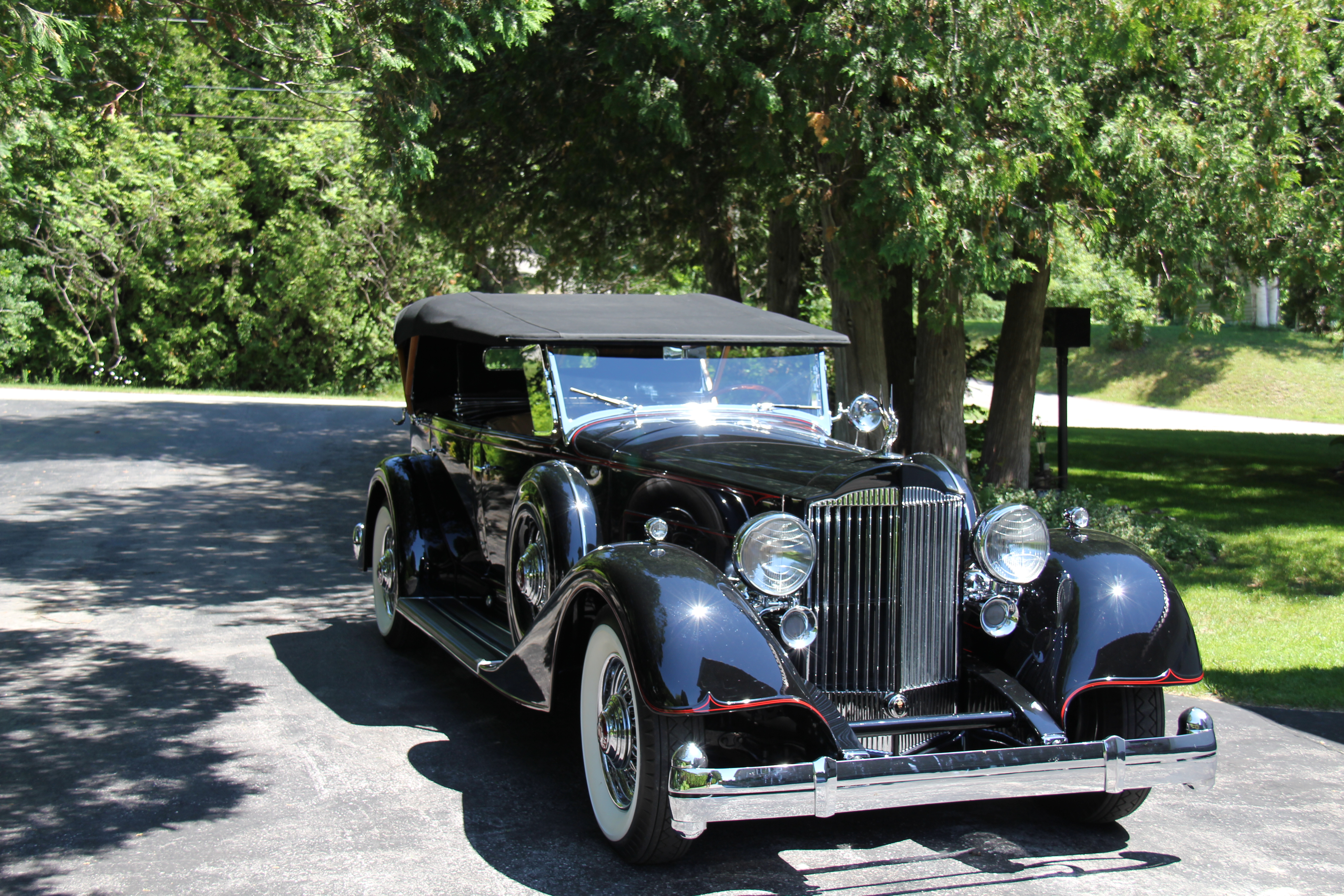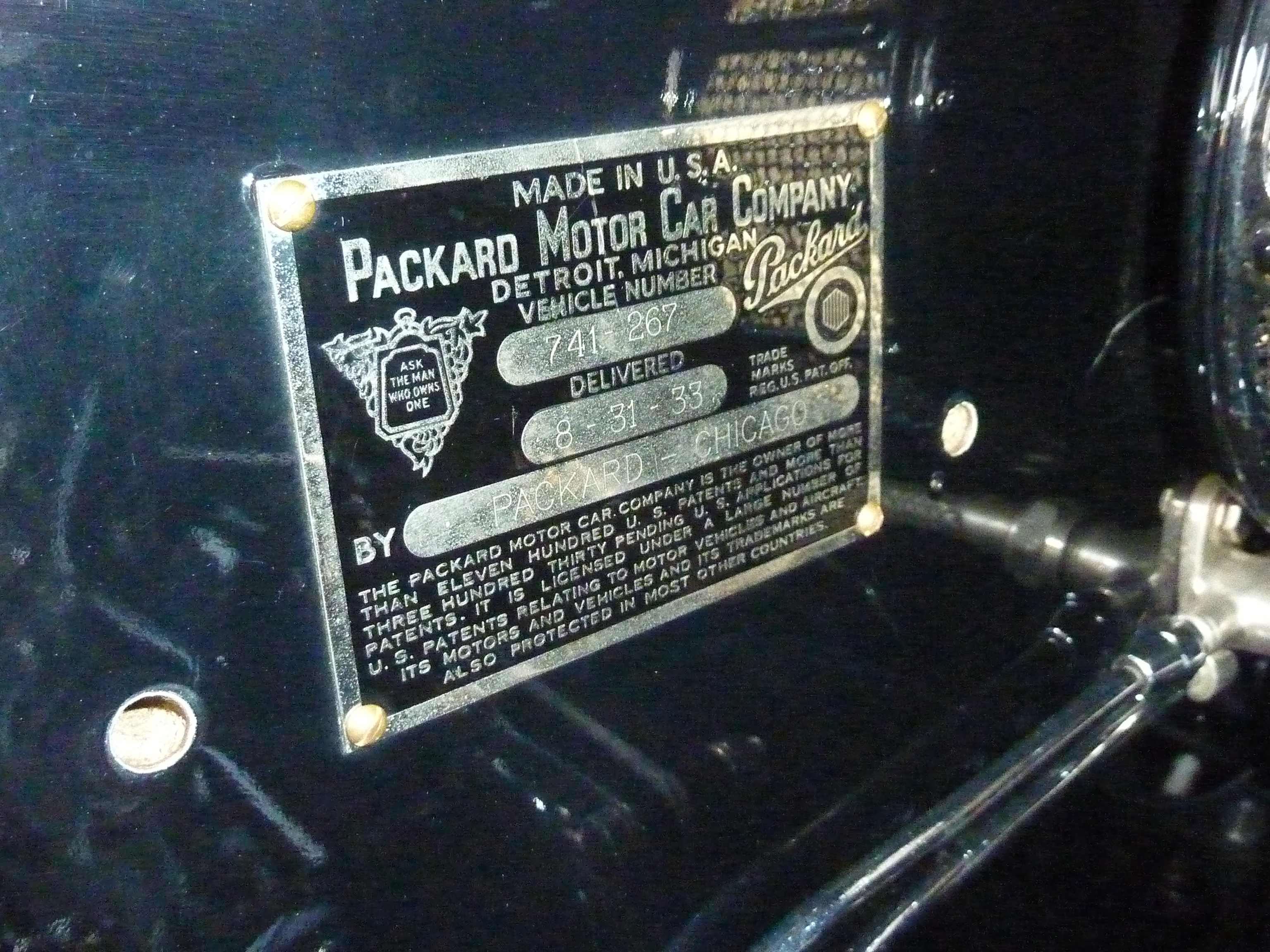1934 PACKARD 1107/741 DUAL COWL PHEATON NO 10
The 1934 1107/741 Dual Cowl Phaeton Packard Twelve was considered by some to be the ultimate V12. This was the last Packard that featured the classic swept fender as future models would use the streamline look. The interior is equally as elegant with a walnut trim and many luxurious appointments. The V12 has 160 Horsepower, 445.5 Cubic Inch displacement with Stromberg downdraft carburetors and capable of a maximum speed of 93 MPH and the vehicle weighed over 6100 LBS. Coachwork is by Dietrich, Inc which sits on a 142 in. wheelbase. There is a three-speed synchromesh gearbox, shaft drive, adjustable vacuum assisted drum brakes, and automatic cold-start system.
This 1934 Packard performs beautifully across the Canadian landscape climbing hills like they never existed. It is a true pleasure to enjoy and drive.
This 1934 Packard was 1st place Junior/Senior & Premier Prize Winner in CALIFORNIA CCCA NATIONAL COMPETITION. It also won Best Pre-War at the 2014 COBBLE BEACH CONCOURS Event.
Packard Motor Car Company
(1899 – 1958)
In 1898 James Ward Packard of Warren Ohio observed in his partner’s new Winton Automobile a number of things that he felt could be improved. As a result, he wrote a letter to the Winton Headquarters in nearby Cleveland Ohio outlining his suggestions. The President of Winton wrote back a snippy letter telling Mr. Packard that if he thought he could build a better auto he should. Thus in 1899 was born The Packard Motor Car Company. In 1903, the company was moved by investors to Detroit MI where, over the next half century, Packard earned the reputation for class and elegance.
The Packard Plant in Detroit was designed as one of noted industrial architect Albert Kahn’s glass palaces and was, when it opened, the largest industrial plant in the world. At a time when many cars were aimed at the low price market (Gale Model A at $500, and the Olds Runabout at $650) Packard aimed at the upscale market starting at $2600. By the 1920’s President James A. Macauley led Packard to be “the number one designer and producer of luxury autos in” America. He also came up with the iconic slogan “Ask the Man Who Owns One.”
As was the custom at the time, Packard also made chassis’ for outside coach makers such as Dietrich, Inc of New York whose work is seen in the Lang Collection 1929 Packard Dual Cowl Phaeton and the 1934 Packard Dual Cowl Phaeton. Dietrich would complete the car to the customer’s desires and specification. Looking back from the Twenty-First Century they did a fabulous job.
One efficiency that Packard enjoyed was a single assembly line and the fact that they did not change models every year. Instead in 1923 they started building their cars in “Series.” Some series lasted two years other seven months but it averaged out to one new series a year. For instance, the 1929 Packard in the Lang Collection is a 6th Series (Model 645) while the 1934 is an 11th Series (Model 1107). There was no 13th Series.
During the early 1930’s Packard fought against the Great Depression by building even more lavish and luxurious cars. However, in 1932 they relented and designed and built the Light Eight for one year at a slightly reduced price although it contained all the design excellence for which Packard had been known. Also, in 1932 Packard Chief Engineer Jessie Vincent introduced the Twin Six engine that would be renamed the Packard Twelve which is listed as one of the greatest automotive engines ever produced. The Packard Twelve powers the 1934 Dual Cowl Phaeton of the Lang Collection
Beginning in 1935 Packard introduced the Junior line of cars built on a modern assembly line priced to sell for under $1000.00. Called the 120, it led sales of Packard as a whole to triple the first year (1935) and triple the next year (1936). Packard was saved from the Depression that had claimed so many other of the luxury car market.
Packard outsold Cadillac until 1950. By 1958 it was gone. But during those 50 years Packard earned a reputation for being one of the finest cars on the road.
Body by Dietrich
As we have seen one of the great designers of the 1920’s was Ray Dietrich. Born in New York City in 1894, Dietrich began his career with Brewster in 1913 as a delineator. Delineators took the sketches of the designers and made them full sized. While at Brewster he met Tom L. Hibbard (1898-1982). On the previous pages we recounted the birth of LeBaron Coachworks so now we will pick up the tale after Ray Dietrich left LaBaron for Detroit in 1925.
First enticed by Edsel Ford to come to Detroit, Dietrich in turn enticed a number of Brewster employees to follow him to the Motor City. He also hired LeBaron’s Werner Gubitz as Dietrich, Inc’s illustrator and designer. Dietrich first designed semi-custom bodies for Lincoln before a number of Packard dealers started approaching him with commissions for various custom bodies. After a great deal of outside encouragement, Packard President Alvan Macauley reluctantly suggested a friend of his son, Jack Jarvis, as a salesman for Dietrich, Inc. Jarvis made a trip across the country with three custom Packard’s showing them off to dealers and the public resulting in 150 orders. When the factory heard of this they ordered another 175 examples of the three bodies, the first of many subsequent Packard orders for Dietrich, Inc.
In 1926, after attracting orders from Marmon, Chrysler, Lincoln, Packard and Pierce-Arrow, Dietrich was asked to be the designer for Franklin (see the Lang Collection). Dietrich also did work for other automakers including the 1927 Erskine that Studebaker showed at both the Olympia and the Grand Palais in Paris Salon (see the Lang Collection). By 1927 Dietrich, Inc became the largest coach maker in the country, producing from 18-25 bodies per week in excess of 1000 bodies per year.
In the opening days of the Great Depression Ray Dietrich was forced to resign the presidency of his own company. For the next few years, Mr. Dietrich did consulting work and sold individual designs. The bodies he designed for Packard continued to be sold for the next few years but by 1933 they hired free-lance designer Count Alexis de Sakhnoffsky to update them. He refined the original designs using some visual tricks such as eliminating the side-mounted spares, and installing slanted windshields, thereby creating the impression of greater length without having to retool the body. When mated with the fabled Packard 12, these became some of Packard’s greatest designs. (see Lang Collections, 1934 Packard).
After Packard, Dietrich was hired by Walter P. Chrysler as a designer and to set up a four year course in body design and engineering at the new Chrysler Institute of Engineering. Although he would leave the firm in mid-1938, his designs would grace Chrysler products until WWII. After Chrysler, Dietrich was hired by Morris Markin of Checker Cab Mfg, Co as a consultant for $100.00 per day. After the WWII he assisted Preston Tucker and Alex Tremulis with the design of the 1948 Tucker.
In the early 1960’s Ted McCarty president of Gibson Guitar asked Ray Dietrich to try his hand at designing a guitar. The result, his final creation, was the design of Gibson guitar’s fabulous Firebird debuting in 1963 which remains a collector’s item itself to this day.
Raymond H. Dietrich died in 1980 at the age of 86. His wife donated his papers to the Classic Car Club of America’s Library at the Gilmore Car Museum in Hickory Corners, MI.
Much info taken from Coachbuilt.com by Mark Theobald
